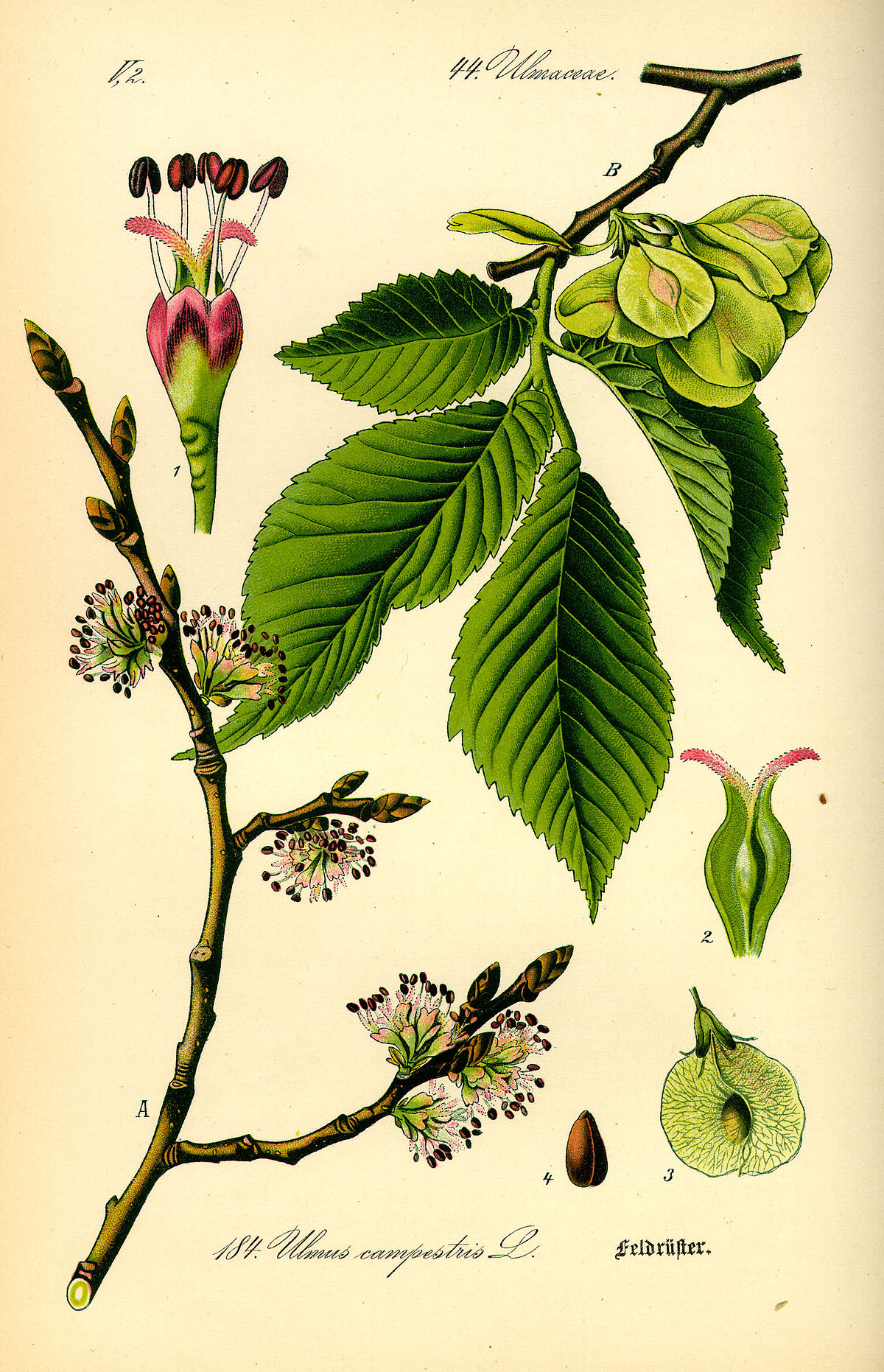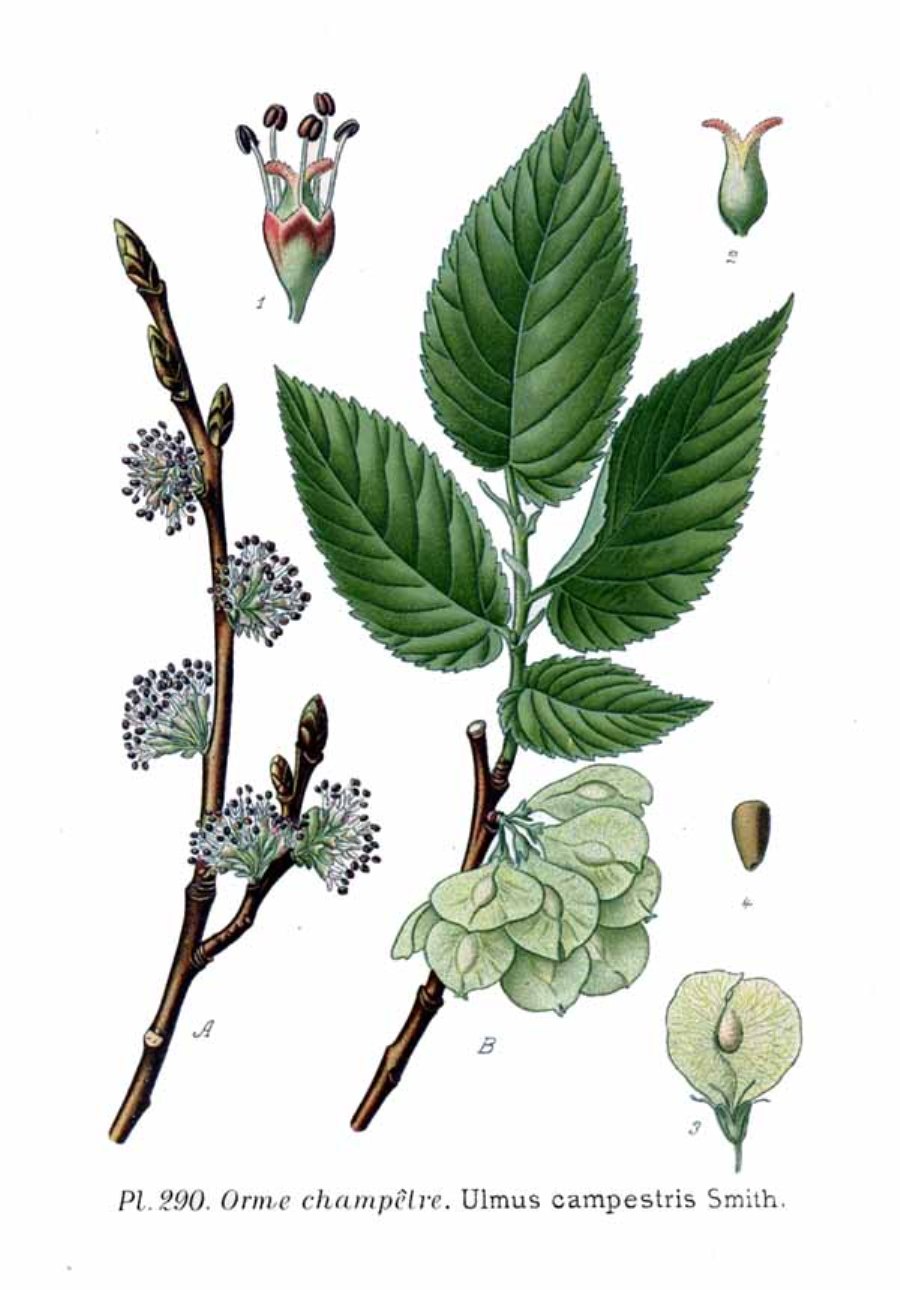It’s a tree that can grow up to 30 meters. It has a straight stem with smooth bark and greyish in the juvenile phases that becomes darker and longitudinally fissured with advancing age. In some specimens the bark appears, both on the trunk and on the twigs, very thick and suberose.
The field elm is a very plastic, vigorous and long-lived plant that can live even hundreds of years. In the adult specimens the crown is ample with ascending and slender branches. With the age the terminal twigs become pendulous.
The leaves are alternate, oval in shape and typically asymmetrical at the base; the lamina of one side of the leaf sticks lower on the petiole than the one of the other side. The margin is doubly toothed and the petiole hairy. The upper page is dark green while the lower page is lighter and hairy. They are 4-8 cm long and 3-4 cm wide.
The flowers are hermaphroditic and numerous, gathered in bundles of red-purple color. These are born before the leaves, between winter and spring (February-March) and are devoid of nectar. For this reason the flowers are not attractive towards the pollinating insects and the pollination is therefore purely anemophilous.
The fruit is a 15-20 mm winged 'samara', pedunculated, oval and yellowish green. The maturation of the samaras takes place in May and their production is almost always abundant.
The species prefers bright and sunny environments and grows in deep, cool and humid soils. It also adapts to clayey and calcareous soils.
At the beginning the roots dominate the central taproot and then, over the years, the lateral roots also become robust. The plant can emit numerous root suckers and, if yielded, vigorously repels from the stump. The country elm is widespread throughout the peninsula; in the spontaneous state we can find it in the xerophilic woods in Roverella and is one of the species that make up the lowland forests in wetlands. It can live from the plain up to 1000 meters of altitude.
In the countryside it has always been used to make hedges; in the cities it is planted for ornamental purposes as it bears well both pruning and road pollution.
Its wood has always been precious, as it is easy to work but tough and durable. It is used in marine and fine cabinet making.
Since the 1950s, most Italian elms have been affected by a serious disease, the 'Grafiosi'. The pathogen is a fungus (Ophiòstoma ulmi) transmitted by scolitid insects which dig short tunnels in the plant for their nourishment. The pathogen colonizes the elm thanks to the lymphatic flow and develops its hyphae in the vessels to obstruct them, causing the desiccation of the plant.
Characteristic of the disease is the desiccation of the elms in full vegetative season which have persistent dry leaves and twigs that fold in a hook.

